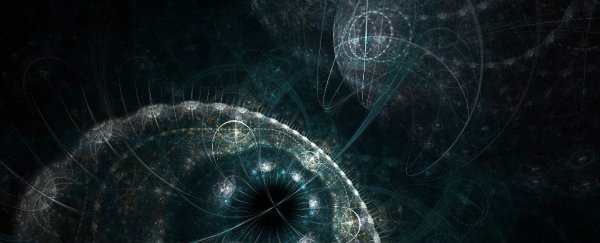The laws of thermodynamics are some of the most important principles in modern physics, because they define how three fundamental physical quantities - temperature, energy, and entropy - behave under various circumstances.
But now physicists say they've found a loophole in one of these laws, and it could create scenarios in which entropy - or disorder - actually decreases with time.
Thanks to modern physics, almost everything in the Universe can be explained according to two theories: general relativity for the big stuff like stars, galaxies, and the Universe itself; and quantum mechanics, for behaviours on the atomic scale.
Within those two branches, we have the four laws of thermodynamics, which describe how heat (or thermal energy) is converted to and from different types of energy, and the effect that this can have on various forms of matter.
Basically, if you want to know how energy moves within a system - from an atom to a black hole - these are the laws you'll need.
Of particular interest to us right now is the Second Law of Thermodynamics, which deals with the transition of energy within a system from 'usable' to 'unusable'.
As usable energy within a closed or isolated system decreases, and unusable energy increases, entropy also increases.
Entropy is a measure of the randomness or disorder within a closed or isolated system, and the Second Law of Thermodynamics states that as usable energy is lost, chaos increases - and that progression towards disorder can never be reversed.
As Alok Jha explains for The Guardian, the Second Law of Thermodynamics is probably even more profound than the First Law of Thermodynamics - which states that energy cannot be created or destroyed - because it describes the limits of what our Universe can do.
"This law is about inefficiency, degeneration, and decay. It tells us all we do is inherently wasteful and that there are irreversible processes in the Universe," says Jha.
"It gives us an arrow for time, and tells us that our Universe has a inescapably bleak, desolate fate."
But what if that wasn't the case in every single scenario? What if you could create a system in which entropy actually decreases - the egg unscrambles itself, so to speak?
Researchers at the US Department of Energy's Argonne National Laboratory say they might have discovered a loophole in the Second Law of Thermodynamics, where the march of entropy can go in the opposite direction - on a microscopic scale, at least, and only in the short term.
They investigated a statistical concept that underpins the Second Law, called the H-theorem. In its most simple form, the H-theorem describes how if you open a door between two rooms - one hot and one cold - they will eventually settle into a lukewarm equilibrium.
But, as Avery Thompson explains for Popular Mechanics, because it's virtually impossible to map how every single molecule moves in this scenario (and far more complex ones), physicists treat them as groups, rather than individuals.
To get a more realistic idea of how individual molecules would behave according to the H-theorem, the Argonne Lab team decided to approach it on a quantum scale.
They did this by taking quantum information theory, which is based on a bunch of abstract mathematical systems, and applied it to condensed matter physics, to come up with a new quantum H-theorem model.
"This allowed us to formulate the quantum H-theorem as it related to things that could be physically observed," one of the team, Ivan Sadovskyy, explains in a press release.
"It establishes a connection between well-documented quantum physics processes and the theoretical quantum channels that make up quantum information theory."
They say that within their new quantum H-theorem model, there were certain circumstances in which entropy might actually decrease - temporarily, at least.
They compare the results to Maxwell's Demon - an 1867 thought experiment by physicist James Clerk Maxwell.
Maxwell proposed that if a tiny, quantum demon sat at the door between two lukewarm rooms, and only let through particles travelling at a certain speeds, it could effectively control the flow of temperature, causing one room to warm up as the other one cools.
"The demon would only allow hot things to go one way and cold things to go another," Thompson explains for Popular Mechanics. "Essentially, the demon could unmix the mixture."
The Argonne Lab team has now taken things a step further by coming up with a mathematical model to show how a quantum system could be created where there is a temporary "negative entropy gain" - in other words, a decrease in entropy.
"Although the violation is only on the local scale, the implications are far-reaching," said one of the team, Valerii Vinokur. "This provides us a platform for the practical realisation of a quantum Maxwell's demon, which could make possible a local quantum perpetual motion machine."
It's high-concept stuff - and deeply controversial - but the researchers are planning on expanding their team so they can design a proof-of-concept system based on their quantum H-theorem model.
We'll have to wait and see if they can pull it off.
The research has been published in Scientific Reports.
